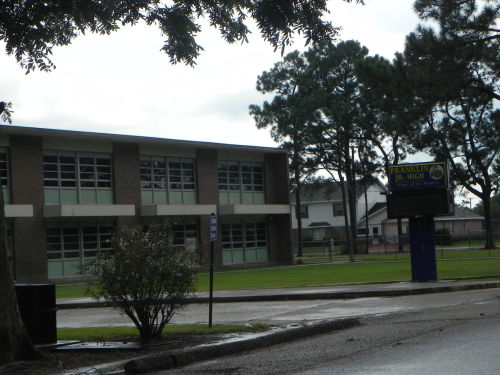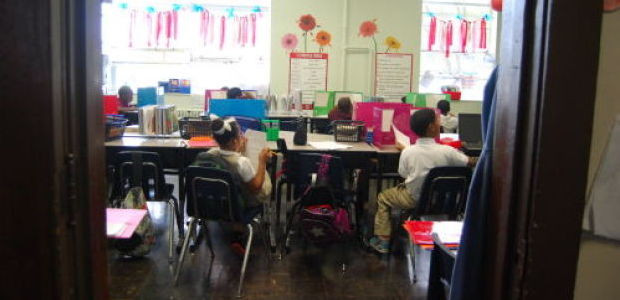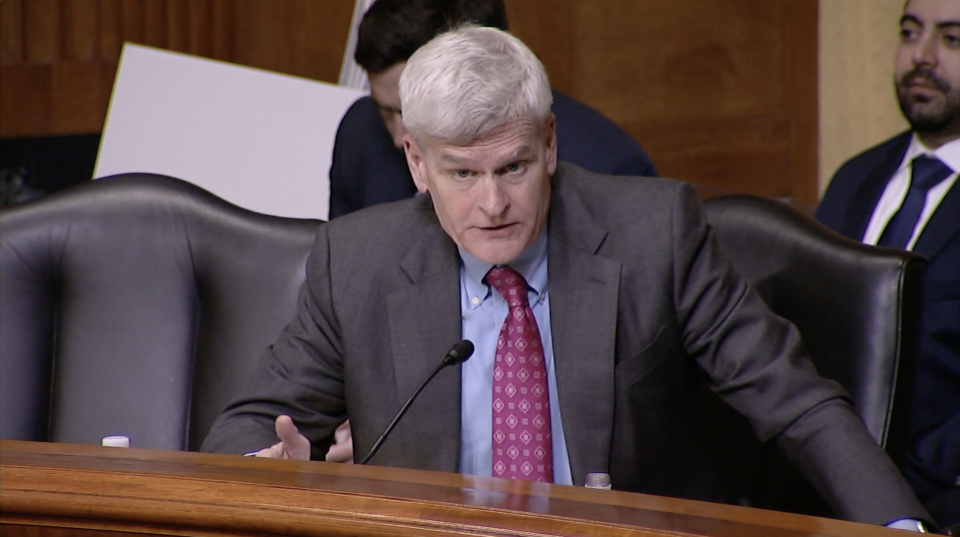
Henderson’s happy at Nicholls post-transfer
September 10, 2013
St. Mary school takes a hit
September 10, 2013More than one-third of Terrebonne Parish School District teachers were deemed “Highly Effective” by the state Department of Education’s new teacher evaluation model, which used student data and principals’ observations of teachers to judge public educators’ value.
Highly Effective is the best of four categories in which teachers are placed. Terrebonne had 36 percent of its teachers in this category, four points more than the state average and a figure reached by 21 of 69 school districts in the state. Thirty percent of Lafourche Parish teachers were in the top tier, and St. Mary Parish had 25 percent of its instructors meet the benchmark.
“We’re pleased to see we’re ahead of the state average in every category, and in some areas we are significantly ahead,” Terrebonne Public Schools Superintendent Philip Martin said. “That is encouraging to see, when you compare yourself to other districts, you’re doing pretty good.”
When combining Highly Effective with the second tier – “Effective: Proficient” – St. Mary’s 93 percent paced the Tri-parish districts, followed by Lafourche and Terrebonne at 91 and 90 percent, respectively. The state average was 89 percent.
“We felt like the scores were going to be very good scores for our teachers and administrators because our student scores were very good,” St. Mary School Board Superintendent Don Aguillard said. “There’s a high correlation between the two events. We were expecting pretty much what we received in terms of competent results for teachers and administrators.”
Three percent of Terrebonne’s teachers were rated “Ineffective,” the lowest tier, compared to 2 percent each in Lafourche and St. Mary parishes. Four percent of teachers statewide received this designation.
“We devise and design with (Ineffective teachers) activities that improve the areas that they maybe need assistance in,” Martin said. “It’s very prescriptive, according to what that teacher may be having problems with. Our teachers have been very receptive; I’ve never met a teacher who didn’t want to get better.”
Martin said the school district has long based salaries, promotions and general job assignments on teacher ratings. Some Terrebonne educators have discovered “they’re not cut out to be” teachers and resigned, Martin said, but none have been fired to this point. “It’s intended not to get teachers, that’s not the point of all of this,” he said. “It’s intended to help all of us get better.”
Teacher ratings have taken on greater importance since recent education reform has linked pay and job security to teacher effectiveness. Under legislation passed in 2012, still being challenged in court by the Louisiana Federation of Teachers, new teachers’ opportunity to obtain tenure is linked specifically to Highly Effective ratings. It also prohibits pay raises to teachers lumped in the lowest tier and puts them on a path to lose existing tenure and, possibly, their jobs.
Compass, the new system’s moniker, ostensibly weighs principals’ in-class observations of teachers evenly with student outcomes, a catch-all phrase to cover both the educators judged on whether students meet learning goals and those who are scored on student growth data per testing, according to the report.
Terrebonne’s administrators rated 32 percent of the district’s teachers as Highly Effective through observations, by far the highest percentage in the Tri-parish area. St. Mary principals gave that designation to 16 percent of their teachers, and the figure was 14 percent in Lafourche.
Student outcomes designated 56 percent of Lafourche’s teachers as Highly Effective. Fifty-one percent of both St. Mary and Terrebonne parishes’ teachers were Highly Effective based solely on student outcomes.
Terrebonne among state’s top performers in VAM data
The process of rating teachers based upon standardized test scores is done through what is called value-added data. The formula takes into account various student qualities, including socioeconomic factors, and predicts how each student should score on a given test. The model, used nationwide, is supposedly able to isolate a teacher’s impact on a student’s test performance. Critics and mathematicians nationwide have questioned its accuracy, but it is regarded among educational leaders as the best available means to rate teacher impact.
The value-added component of rating teachers is regarded as more difficult than its counterpart, which scores teachers based upon whether students meet teacher-devised and administrator-approved learning goals.
Twenty-eight percent of Terrebonne’s educators were eligible to be judged under the value-added model. Of those teachers, 22 percent scored Highly Effective, a figure topped by only 15 districts and none in the Tri-parish area. Five percent were scored Ineffective.
Value-added outcomes were applied to 28 percent and 29 percent of Lafourche and St. Mary instructors, respectively. Lafourche had 20 percent of these teachers score Highly Effective and 2 percent score Ineffective. In St. Mary, those numbers were 14 percent and 7 percent, respectively.
The state averages were 19 percent and 8 percent, respectively.
New rating model is better tuned, but needs changes, according to state
Terrebonne Parish was one of the school districts to pilot the new rating system, which was released for the first time this year.
Compass, which replaces a two-tiered system that yielded 98.5 percent of the state’s teachers as “satisfactory” in 2011-12, was not introduced without resistance.
“For a system that has been touted as based on irrefutable scientific formulas, this report raises many more questions than it answers,” said LFT President Steve Monaghan in a printed statement. “One thing is very clear, there is no legitimate reason to deny teachers the right to question the findings.”
The student outcome portion of Compass grades some teachers differently than others, Monaghan pointed out.
State Superintendent John White pointed to congruencies in the report’s results and student achievement as evidence that the model is better tuned than what it’s replacing. Districts that scored highly on teacher effectiveness are among the state’s leaders in performance scores and vice-versa, state officials pointed out.
“The alignment between student progress results and the evaluation results shows the rigor with which many school and district leaders approached this process,” White said in a printed statement. “We have changes to make, but for the first year, we should be very proud.”
Even DOE, however, cautioned against putting too much stock into the inaugural figures.
“The report is not meant to pass immediate judgment,” the document reads. “Using this tool well will require patient review of where there are commonalities and where there are differences in how the Compass tool was used in its first year.”
Setting the bar higher
The state also praised 63 schools that achieved exemplary results while setting high standards in regard to classroom observations.
Recognized schools were those within the state’s top 10 percent for student improvement or overall achievement while also having 10 percent or fewer of its teachers score Highly Effective on the teacher observation element of Compass.
Southdown Elementary School, in Houma, was one of three Tri-parish schools to make the list. The number of Southdown’s students who scored basic and above on standardized tests increased by 11 percent from 2011-12 to 2012-13, and 88 percent of the school’s teachers scored Highly Effective based on students meeting their learning targets. This propelled the school’s percentage of teachers rated Effective: Proficient or Highly Effective to 93 percent.
Meanwhile, only 3 percent of the Southdown’s teachers scored Highly Effective via supervisor observation results, which ranks in the bottom 10 percent of schools throughout the state. The state superintendent said this indicates a mentality conducive to further improvement.
“These schools show that we can adopt a higher bar for teaching excellence,” White said.
Kanika Smith, who was promoted from assistant principal to principal of Southdown Elementary this year following Margaret Cage’s relocation to the top job at Evergreen Middle, said Southdown’s success is attributable to the level of communication between the school’s administrators and instructors.
“We have high expectations of our teachers and our students,” Smith said. “Once we relay those expectations to our teachers, we really hold them to it. There is no inflation. We want a true picture when we do these observations so we can give our teachers feedback.”
Thibodaux and South Lafourche high schools also made the list, with 4 and 8 percent of their teachers, respectively, scoring Highly Effective during observations last year. Thibodaux’s student population to scored at basic level or above leapt by 8 percent from 2011-12 to 2012-13, and South Lafourche’s jumped by 10 percent.
Mrs. Abooud’s fourth-grade class takes a test at Southdown Elementary School in Houma, one of 63 statewide schools and one of three in the Tri-parish area recognized for succeeding in an strict environment regarding teachers’ performance.












